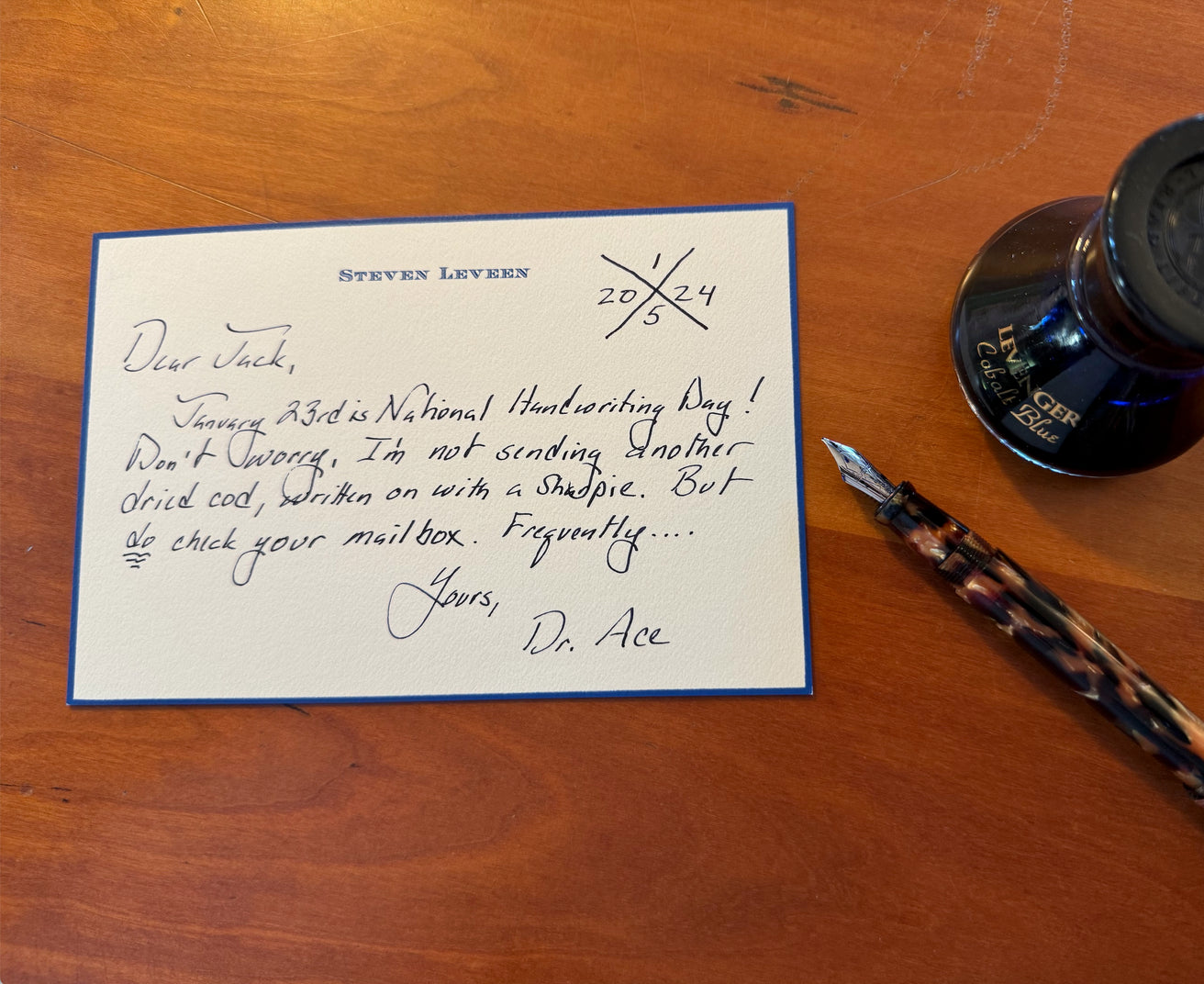January 23rd is National Handwriting Day. Who knew? I plan on celebrating in my local coffee shop by pulling out the folder of greeting cards I keep in my backpack and writing a few thank-you notes. After all, it’s healthier than what I plan to do for National Donut Day.
National Handwriting Day was invented back in the ´70s by the marketing geniuses at the Writing Instruments Manufacturers Association. They cleverly chose January 23rd because it’s the birthday of John Hancock, the former British subject who still holds the honor of penning the most famous of all American signatures. At Levenger, we may not be marketing geniuses, but we’re not above some shameless commerce, especially if it’s silly.
Part of the reason National Handwriting Day hasn’t exactly caught on is the word handwriting. The word makes many of us cringe, because it’s so often prefaced by “lousy,” “childish,” “illegible,” or some other unflattering adjective. I prefer to say “writing by hand,” which can include printing, which is what I do, and what architects do when they artfully label their cool sketches.
Nearly 50 years after the founding of National Handwriting Day, handwriting is something of a fraught issue. I hear some folks in California want to bring back cursive handwriting instruction. How ironic. The home state of Apple and Google plans to impose penmanship lessons on unsuspecting children. Maybe at recess we should add lessons on how to lasso a cow from horseback.
I’ve got nothing against cursive handwriting. It can be beautiful. It’s historical. My own grandfather was a penmanship instructor. But that was back when legibility and speed of handwriting mattered. Today, writing by hand still matters, but not for speed, nor even for legibility. Everybody can produce fast and legible writing today. Kids can produce it faster than their parents.
Today, writing by hand matters but for different reasons. Here are the Big Three:
1. Writing in a journal. Keeping a journal by hand invites us to slow down, to reflect, and to capture what’s meaningful to us on this day. Speed is not the point, nor is legibility, since you’re writing for yourself.
2. Listening. If you really want to show someone you’re listening to them–a professor, a boss, an interview subject–you close your laptop and pick up pen and paper. Speed isn’t important because you’re only capturing a few words, here and there, that will allow you to remember their points later. The traditional tools of pen and paper encourage us to focus on what the person is saying, to listen actively, and summarize in our own key words for later recall.
3. Crafting handwritten cards. To pen a card by hand is to slow down and savor. You can reflect, as you do when journaling, but you also get to create a work of art–a work of heart–that will move those who receive it. It will touch them literally when they open your card, and figuratively when they absorb your words. Even your errors and corrections testify to the handmade nature of this venerable form of communication. There’s still nothing else like it today.
Writing handwritten cards is something that most of us want to do more than we actually get around to. If you’re in this group, here are three tips:
No. 1 Carry a few cards in your bag so you’re ready to practice this ritual when you get a chance.
No. 2 Carry stamps. I recommending buying them online from the United States Postal Service because you can see all the stamps currently available. I always keep a variety on hand–some beautiful, some funny–so I can choose something appropriate, or inappropriate, depending….
No. 3 Buy a Levenger pen. Okay, this won’t help you write more cards, but it will help our sales this month. And, seriously, having cool cards, colorful stamps and pens that you like does help you enjoy this traditional ritual, just as having good kitchen gear encourages cooking.

One more thing….Don’t write your cards only at home. Make a public display of writing. You’ll be helping to spread the idea, keeping this healthy tradition alive.
Gratefully yours,
![]()
Steve Leveen
Co-Founder











